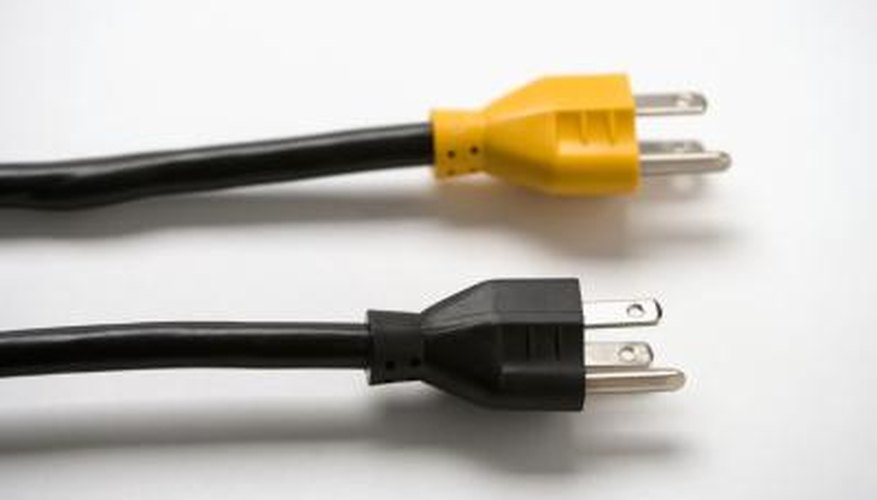Although the UK and Europe use 230 V for the domestic power supply this is not the case in all countries in the world. If you are travelling to the Caribbean, for example, you will probably need to use a 110 V plug for your electrical goods. If you cannot locate a plug adapter, you will have to rewire to apply 110 V plugs.
Cut the old plug off with a pair of wire cutters. Cut as close to the old plug as possible. Ensure you remove any damaged wire.
Remove about 1.8 cm (3/4 inch) of the power cord's insulation. Use a sharp utility knife. Score the insulation. Ensure you do not cut the blue, brown and green wires inside the cord.
- Although the UK and Europe use 230 V for the domestic power supply this is not the case in all countries in the world.
- Ensure you do not cut the blue, brown and green wires inside the cord.
Strip about 1.2 cm (1/2 inch) of insulation off each of the three power cord wires. Use a wire stripper.
Place the cover and clamp assembly onto the cord.
Insert the wires' stripped ends into the wire clamps located under the screws. Place the green wire into the clamp with the green screw. Place the brown wire into the clamp with the brass-coloured screw. Place the blue wire into the clamp with the silver-coloured screw. If you bought your electric gadget locally you may find the brown wire is black and there will be a white wire instead of the blue.
- Strip about 1.2 cm (1/2 inch) of insulation off each of the three power cord wires.
- Place the blue wire into the clamp with the silver-coloured screw.
Tighten each screw with a Phillips screwdriver.
Slide the cover assembly up to the plug. Tighten the screws in the plug's face with a Phillips screwdriver.
Tighten the strain relief clamp at the bottom of the plug. Use a Phillips screwdriver.
